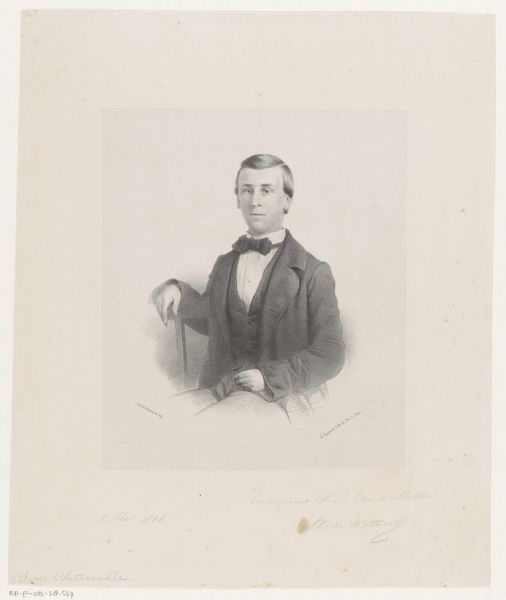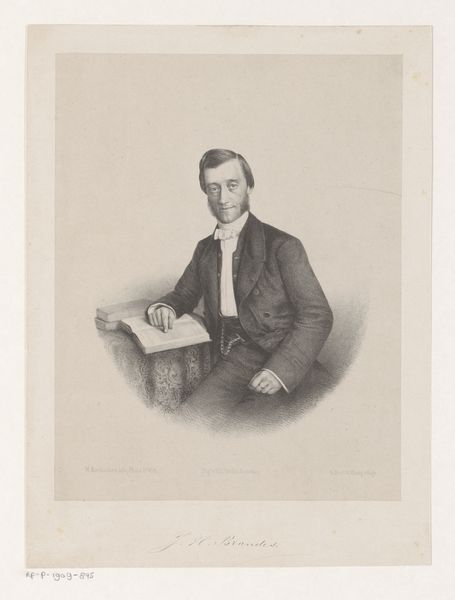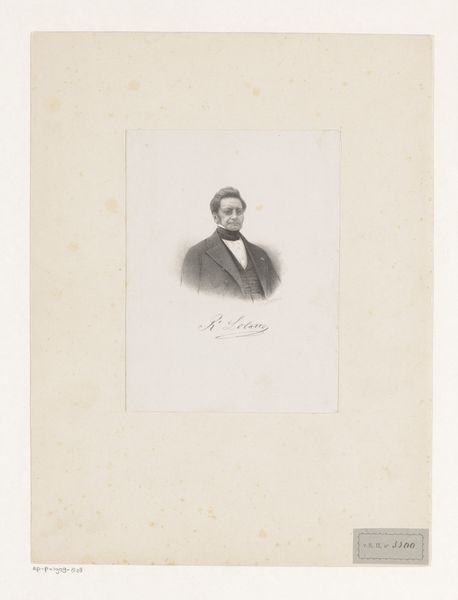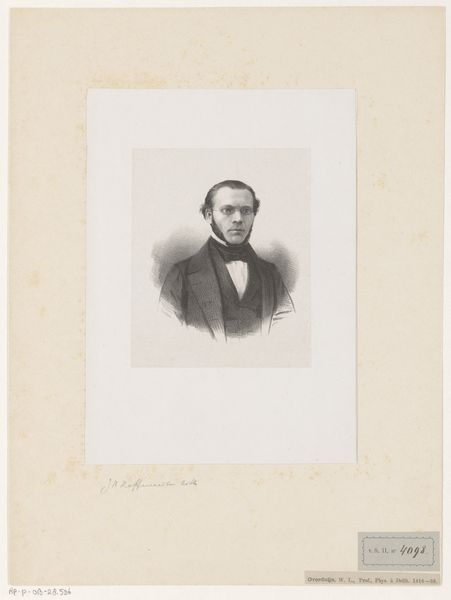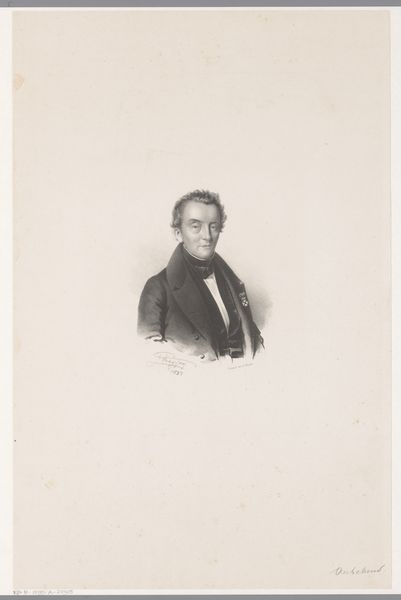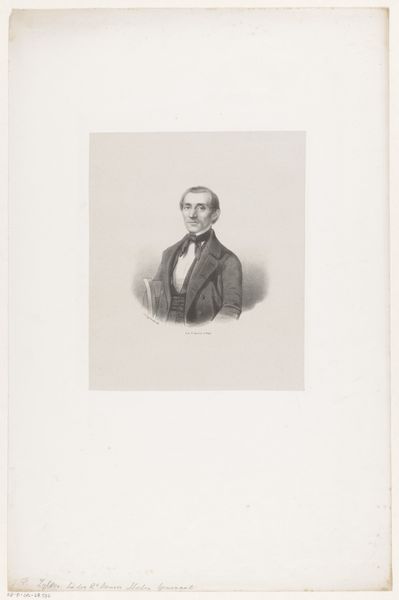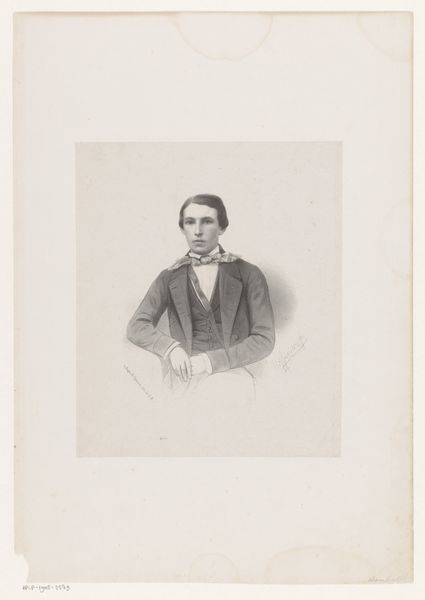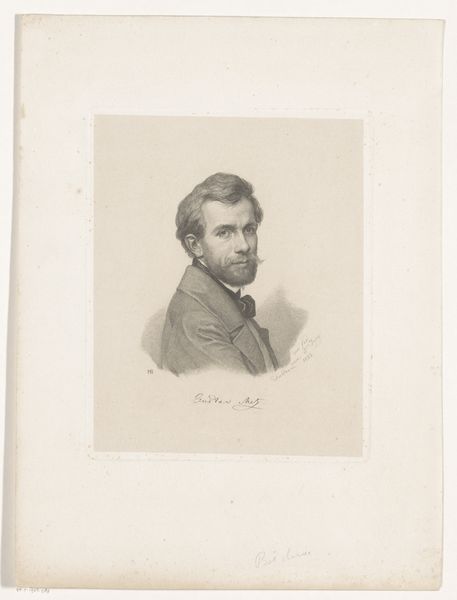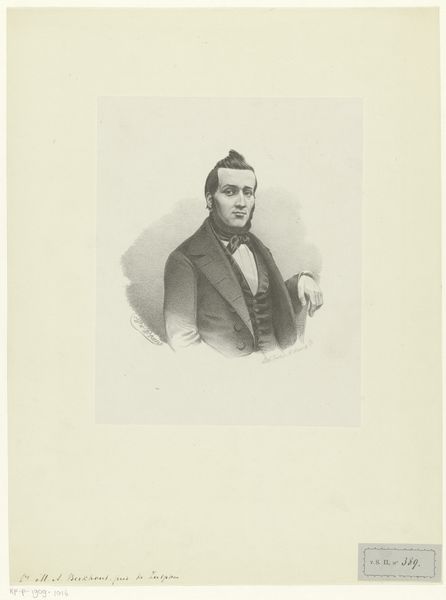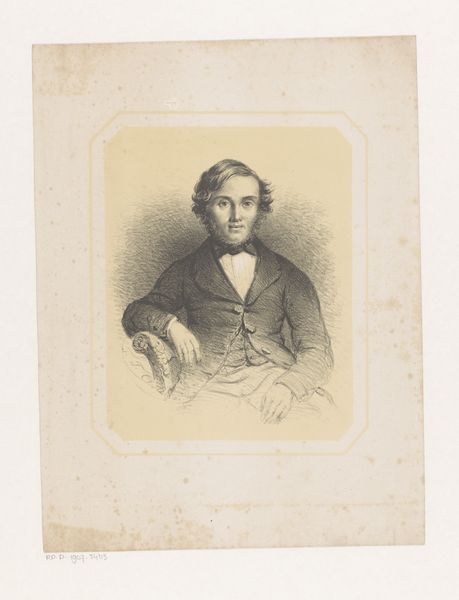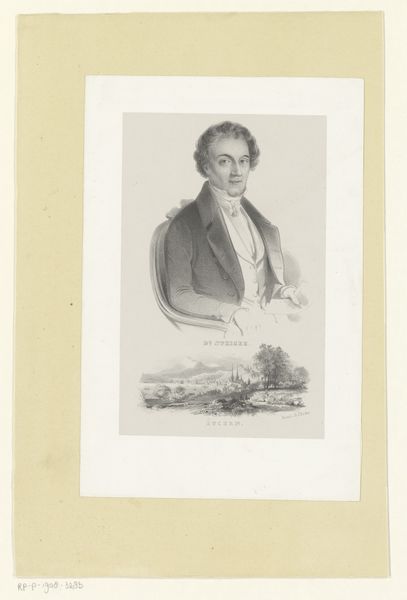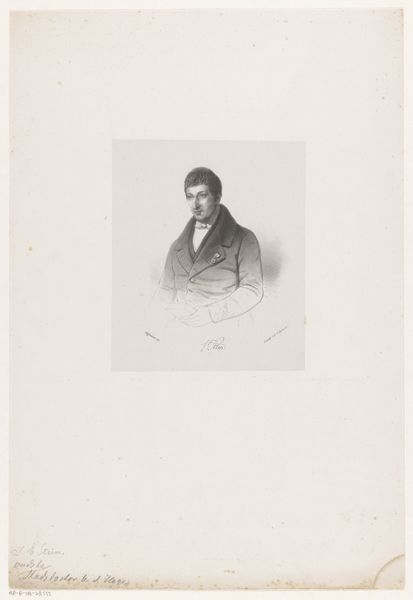
drawing, lithograph, print
#
portrait
#
drawing
#
neoclacissism
#
lithograph
# print
#
historical photography
#
academic-art
Dimensions: height 393 mm, width 304 mm, height 484 mm, width 352 mm
Copyright: Rijks Museum: Open Domain
Hendrik Ringeling produced this portrait of Abraham Rutgers van der Loeff with a pencil and brush sometime in the mid-19th century. It invites us to reflect on the relationship between portraiture, social status, and the construction of identity during that era. In the Netherlands during the 1800s, portraiture served as a means for individuals, particularly those of means, to assert their place within the social hierarchy. Looking closely at the visual codes, you might notice the subject’s tailored suit, suggesting affluence and respectability. The book and papers may hint at van der Loeff’s intellectual pursuits or professional standing. What this image subtly conveys is the identity of a bourgeois, educated man. To understand this image better, one might research the social and economic conditions of the Netherlands at this time. Examining archival sources, such as census records, personal letters, and institutional documents, might shed light on van der Loeff’s life, career, and social connections. The meaning of this artwork lies in understanding the social and institutional context in which it was produced and consumed.
Comments
No comments
Be the first to comment and join the conversation on the ultimate creative platform.

